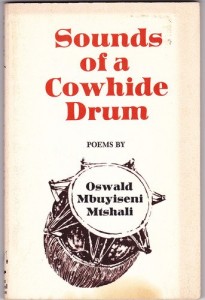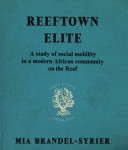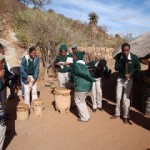The Broken Circle: The Prevalence of Fear in Low-Cost Housing in South Africa
No comments yetThe South African township is characterised by low-cost houses as well as the so-called ‘shack’ that consists of corrugated iron, plastic and cardboard. In several research projects high levels of fear have been encountered among residents of these low-cost houses, in both rural and urban contexts (Holm, Murray and Pauw, 2005).
The high levels of fear among residents of low-cost housing present us with a combination of problems of a technical, socio-cultural and religious nature. Modern science, as it has developed since the time of the European Renaissance, has not been very successful in addressing this type of problem. Modern science has been remarkably successful in unlocking the secrets of nature and in utilising the potentialities of nature, through a strong emphasis on the superiority of reason. But this emphasis has had a reverse side: scientists tended to dismiss all the non-rational, yet vital elements of human life and reality, such as the destiny of humanity, human freedom and spontaneity (Prigogine and Stengers, 1984: 34-5).
From early on, African writers have pointed out that the rationalism of Western culture – also of Western missionaries – was alien to the African experience. Africans combine political, cultural and religious resistance to Western rationalism; maybe because Western rationalism seems to be closely associated with the desire to control and dominate. Such resistance can be traced back to African writers early in the twentieth century.
African writers have repeatedly pointed out that there are important differences between Western and African thought patterns: in African tradition, causality may be understood in a magical way, because spirit permeates the whole universe to such an extent that the self and the world, mind and matter interpenetrate each other and cannot be distinguished (Anyanwu, 1984: 87-93); Ibe Nwoga (1976: 17-8, 21) contrasts traditional Western man’s more detached, analytical mode of understanding with traditional African man’s more holistic, instinctive mode of understanding.
In this essay I will argue that the prevalence of fear in low-cost housing is a result of the dysfunctional interaction between the modern, Western or global worldview and the traditional African worldview. The different worldviews meet, interact and combine in the household (household can be seen as a micro-system formed by numerous elements that interact and combine to form a whole, showing properties that are properties of the whole, rather than properties of its component parts), and the end result is a rather chaotic manifestation in the household: in the architecture, the social relations, and the interpretation of illness. These aspects are so intertwined that an architectural problem (how to design an energy-efficient house) is related to a religious problem (why do Christians fear that witches will fly through the window?) or maybe to a psychological problem (is such fear a function of conflict with other people?).
We will first discuss the lack of adequate understanding of the household problem by policy makers, illustrated by a number of examples: the housing policies of the apartheid government, the protests of Africanists, the over-confident advice of modernists, and the housing policies of the present government that is formed by the ANC Alliance. This is followed by a few case studies, some from our own research that tells us something of the ‘view from the inside’, i.e. how residents of the low-cost houses experience their lives. The article ends with some theoretical reflections and a conclusion.
Housing policies
It is assumed that both the worldviews mentioned above are extremely powerful, but that a good understanding of their interaction may reveal opportunities for strategic interventions that could influence the nature and direction in which things develop. The search for a better understanding of these dynamics is pursued by analysing what now appears to be the inadequate understanding that various decision makers have had of the housing problem over many decades.
The problem is not only qualitative, but also quantitative. There has been a huge housing backlog in South Africa for decades. It is interesting to compare the way in which the apartheid government (1948-1994) tackled the problem to the way in which the ANC Alliance government has tackled it from 1994 until today. There are more similarities than one may have expected. The apartheid government launched a massive housing programme, but it was based on an inadequate understanding of the housing problem. In the seventies, Africanists initiated protests against the apartheid government. They offered insights into the reasons for black resistance. These insights were ignored by both modernist reformers and eventually the ANC Alliance government (1994-today).
Apartheid
Apartheid is well-known for its oppression and injustice, but there was also an element of idealism. In the 1950s the National Party government, that came into power in 1948, embarked on a massive programme to replace the urban slums with, in total, 352 000 better houses. The Dutch sociologist Mia Brandel-Syrier describes it in her book Reeftown Elite (1971: 5) as
… a housing project of truly mammoth proportions upon which, up to the end of 1960, the government had spent a sum of over R200,000,000 by 1962 … it was hoped there would be no more slums in the urban areas.
The educational and medical services were also expanded significantly. This aspect of the National Party policy can be compared to the kind of high ideals expounded by the president of the USA, Harry S. Truman, who announced in 1949 that his country would make its resources and technology available to the ‘less fortunate’ nations of the world. In South Africa, as in the rest of Africa, the development industry that followed as a result was of a tremendous magnitude. All this expenditure was not, however, based on a proper understanding of the actual dynamics in and the needs of the communities. Development was equated with modernisation the Western way. The prominent American economist J.K. Galbraith (1980: 51-2) attributed the failure of Western initiatives in Africa and Asia to the tendency of Westerners to prescribe the solutions that they understand and have available, but without seeking to understand the actual problems first.
This statement is supported by a remark by Timberlake (1985: 197-207) that all development efforts in Africa had failed:
The African poverty trap, in a word, treats competing doctrinaire ideologies with much the same contempt.
These ideologies did not share the same political approach, but they all saw development in some or other way as modernisation.
Africanists, esp. in the 1970s
The African literature of the twentieth century, also in South Africa, protest against both, the political oppression and the cultural domination of colonialism and apartheid. Identity was a very central theme. This shows that Africa’s problems must not only be seen as political, but also as cultural. Modern African literature has grown largely from tensions existing between African and Western cultures. In 1971 Oswald Joseph Mtshali published his Sounds of a Cowhide Drum. This bundle of poetry marks the transition from coveting the Western lifestyle to the proud assertion of African identity in the early seventies. On page 25 Mtshali writes:
I don’t want to go to heaven when I’m dead.
I want my heaven now,
here on earth in Houghton and Parktown;
a mansion
two cars or more
and smiling servants.
Isn’t that heaven?
But on page 68, the last page, there is suddenly a different mood, the mood of black consciousness:
Boom! Boom! Boom!
This is the sound of the cowhide drum…
I am the spirit of your ancestors,
habitant in hallowed huts,
eager to protect,
forever vigilant.
Let me tell you of your precious heritage,
of your glorious past trampled by the conqueror,
destroyed by the zeal of a missionary…
Boom! Boom! Boom!
That is the sound of a cowhide drum –
the Voice of Mother Africa.
The latter mood is the dominant theme of the seventies in South Africa. It remains important in modern African literature all over Africa. The Africanists have articulated an important element of the feelings of African people – some even verbalised the deep ambiguity, that people want modern Western culture as well as African culture and hate them both at the same time, but they did not present a way forward, an analysis of how these two could be taken up in a higher unity that encompasses both. Their voice was, in any case, ignored by powerful role players in the new South Africa.
Modernists
During the political transition of the early 1990s a scenario team, consisting mostly of white males, academics and business people, produced the Nedcor-Old Mutual Scenarios (Tucker, Scott and Bruce, 1992).
The team felt that a successful transformation from apartheid to democracy was dependent on tangible improvements in the conditions of the daily lives of the masses (Tucker et al., 1992: 12-20). Fast political transformation required fast and visible results on the socio-economic level. The Nedcor-Old Mutual Scenarios proposed a ‘change of gears’ approach, in the expectation that modernisation would bring about the desired economic growth, development and social stability. In spite of the failures of development efforts in Africa, more of the same medicine was prescribed for the new South Africa. It was much easier to accept the simple problem definition that apartheid was the problem than to face the more complex problem that Western modernisation may have to be redesigned and adapted for African conditions.
The scenarios proposed massive investment in the black community, with the purpose of ‘kick-starting’ communities into modernisation and economic production: providing 400 000 serviced sites and 200 000 low-cost housing units per annum by 1995; mass electrification; equal, compulsory, free primary school education, as well as adequate post-primary education to provide the skills needed to compete in the economic arena; health care (AIDS was recognised as a major threat; the change of gears scenario could only be successful if South Africa could ‘clearly distinguish’ itself from the ‘plague continent’, according to the scenario team) (see Tucker et al., 1992: 135, 141, 139, 153, 162).
These ideas have been taken up in the policies of the new government, but the deficiencies of an approach that merely transfers Western models to our African soil are clearly illustrated in the development policies followed after 1994. These policies seem very reasonable and enlightened, but they have a blind spot (as Prigogine has pointed out) when it comes to deep and powerful aspects of human nature. New concepts would require a new, more adequate, problem definition. But that still has to wait.
The ANC Alliance government
By 1994 the African National Congress Alliance took office. The ANC Alliance government followed the advice of modernists such as the Nedcor-Old Mutual Scenario team. Between 1948 and 1994, the scale of the problems has increased beyond recognition. Between 1994 and 2006 the government has provided 2.5 million subsidy houses – more than seven times the figure of four decades earlier – and the backlog is still growing. The ANC government follows a cost recovery policy. As a result, it is reported that between 1994 and 2002, ten million people have experienced electricity cuts, ten million have experienced water cuts, and two million have been evicted from their homes, because of their failure to pay for services (McDonald, 2002: 162).
What is most interesting is that the ANC government did not come up with any new ideas for their housing projects. They continued the approach of the National Party. They provide a solution for a political problem: people now have ownership of their homes, but the housing concepts are the same as that of the apartheid government forty years before: a modern, suburban house that neither the government nor the residents can afford to build and maintain.
Both governments have seen it as their task to provide houses to the poor. Both have interpreted it as a quantitative problem (lack of money and other resources) and not as a qualitative problem (lack of suitable concepts and designs). The scale of the problem has increased, and as a result, the quality of houses built by the new government is even worse than before. Both have worked with a simplified interpretation of Maslow’s needs theory, which has the effect that present housing projects only provide for ‘basic needs’ such as water, sanitation and ‘a roof over your head’, and not for community creating space, identity, and a sense of belonging and being at home.
Views from the ‘inside’
Wole Soyinka (1976: viii), a Nobel laureate, pleaded for an academic approach that could express Africans’ ‘true self-apprehension’:
… the apprehension of a culture whose reference points are taken from within the culture itself … African academia has created a deified aura around … intellectualism (knowledge and exposition of the reference points of colonial cultures). To the truly self-apprehending entity within the African world reality, this amounts to intellectual bondage and self-betrayal.
An approach to low-income households is needed that, in the words of Soyinka, takes its reference points from within the culture of the low-income household in order to gain a better understanding of the problem. In this article, such understanding is seen as a key towards the designing of housing models that would improve the situation and be desirable, affordable, sustainable and beneficial.
Therefore, I have tried to gain a better understanding of the way in which residents themselves understand these issues, of ‘the view from within’. ‘Understanding’ is approached in a phenomenological way, that is, by focusing on the way in which low-cost housing is presented in the consciousness of the residents of rural areas and townships in South Africa. The phenomenon of fear has emerged as an important indicator of the meaning that residents give to the house as a satisfier of the need for protection. This section presents residents’ perceptions regarding the past, present and future.
The ‘reeftown elite’
Modern Western culture, in contrast with traditional African culture, is strongly influenced by basic motives such as the search for progress through human control over nature. This leads to discontinuity with the past and the constant development of new technology. The idealisation of modern Western culture is a powerful factor in the shifting dynamics on the South African scene but it is not, as many still believe, necessarily the decisive factor. The way in which all factors interact and eventually combine is the real decisive factor.
One of the best descriptions of a township community that shaped itself on Western cultural patterns can be found in the two books of a Dutch sociologist, Brandel-Syrier, who befriended a better-off township community, or elite, on the Reef in the sixties and seventies. The two books are: Reeftown Elite (1971) and Coming Through. In Search of a New Cultural Identity (1978).
Coming through refers to a successful entry into the modern world, or ‘civilisation’, as the reeftown elite called Western culture. Hardly anybody spoke of an African civilisation at the time. Western civilisation represented the identity people were striving at. “This civilisation was for them mainly three things: church, school and town.” Those who had entered the modern world did so by successfully coming through these three processes: Christianisation (“where it all started”), education and urbanisation. Those who had done so became the elite; they had arrived at the destination that the others were still striving at (Brandel-Syrier, 1978: 8, 13).
In Reeftown Elite (1971: 85-6) the importance of the house as symbol of modernity, even of a sense of being ‘human’, is pointed out:
In itself, to live in a house and not in a hut, was of the greatest social and cultural significance. It not only showed that one had ‘arrived’ socially and culturally, but it demonstrated for everyone to see that one had arrived among human beings.
An insurance agent explained his ideal, if he had money, as follows:
I would buy a nice house. I want us to be comfortable. That is with electricity and all the comforts (Brandel-Syrier, 1978: 96).
The policies of the ANC government, including the Electrification Drive of the 1990s have pursued the same ideal, but without taking cognisance of another, powerful, counter-ideal: the search for the restoration of an authentic African identity.
A case study from a rural area
During fieldwork in a rural area near the University of the North, Polokwane (previously known as Pietersburg), Limpopo Province, in 1990, we met Mrs M. She was a spirited lady, divorced, with two sons. She claimed to be a traditional healer and promptly offered to restore the sight of one member of our research team, who was born almost blind. She also told us about all the threats to her life that she had to cope with.
Mrs M and her sons had recently moved to a new settlement. When the family departed, taking along the corrugated galvanised mild steel roofing sheets (‘zink’) from the old home, she stayed behind in the thatched part of the house, where the ancestral spirits reside, with the intention
… to talk to the ancestors before I go … (or else) I am afraid they will punish me. I do not want to make them angry with me. They can either neck me or make … that we stay without peace … because they will be looking for me at this place I am now leaving.
Disobedience towards the ancestors can be fatal. Mrs M once ignored their instructions and promptly fell ill: “She became too critical,” her son explained. She was healed by taking herbs as instructed by the ancestors in her sleep:
They (the ancestors) come to a person in different ways. You can be ill, not only ill but seriously ill. You may take the illness to your (Western) specialist and you will never get healed. You then come to an African herbalist. There you will be told to join the Malopo dance or they tell you to put a Thitikwane for such and such a person. Without any medication, by doing that you will be healed. At times you find that they want you to become an herbalist. In this case, the African herbalist will teach you and tell you what to do.
The matter-of-fact style is followed by a description of earlier times in terms that remind one of Paradise. Paradise was lost because of the intrusion of the analytic, positivist, scientific and rational light of Western culture:
The coming of the whites in our places spoiled all these things. That is why in these days we do not experience a good rainfall as we used to have in the past. They disturb our ancestors. Look, these people at a (sacred) cave were singing, dancing and enjoying their own selves, giving out some pots and mats. But the whites entered this cave in order to see what was happening inside there. They wished to see these people and it is impossible, they cannot see them.
The fear of ancestors is found elsewhere in Africa too, as explained by John S. Mbiti (1974: 84):
When the living-dead return and appear to their relatives, this experience is not received with great enthusiasm. The food and libation given to the living-dead are paradoxically acts of hospitality and welcome, and yet of informing the living-dead move away. The living-dead are wanted and not wanted. If they have been improperly buried or were offended before they died, it is feared by the relatives of the offenders that the living-dead would take revenge. This would be in the form of misfortune, especially illness …
In addition to the ever-present threat of the ancestors, the household has to cope with threats from fellow people. One reason for leaving the previous settlement was that Mrs M’s enemies had sent snakes to kill her, her ex-husband being one of the enemies. She suffered numerous snakebites. Her son explained:
When my mother felt some pains she once said people sent some snakes to kill her. These people are all her enemies. They didn’t want us to stay. They wanted to kill her so that we must move.
The fact that the physician of the research team could find no snakebite lesions only served to substantiate Mrs M’s firm conviction that Western medicine is helpless and ineffectual in such cases. To her household these threats are more real than the realities that modern science can perceive. The whole family is convinced of being the victim of the evil intentions of other people, sufficiently convinced to pull up their roots and move house.
On arrival in the new settlement she is still afraid. This time she feels threatened that the new community will blame her for everything that goes wrong, in the same way that she blames her enemies:
Whatever wrong is done, people will say it is my children because I am very poor. I think I am going to lead a very bad life at this place.
Not only the spirits and the people are a threat, but the house itself, the one place where one expects to find shelter and feel safe and at home, is a threat. The research team was told that an herbalist should have a very humble home. In order to avoid jealousy, an herbalist should not show overt signs of opulence, irrespective of his/her actual financial standing. The corrugated iron sheets that were put on the roof at the old place were used again here. No nails were used. The sheets were kept in place by sizeable stones that were packed on them, a common practice. These heavy stones could become an instrument of other people’s evil intents and kill her by falling on her. Even the walls could collapse on them:
They were a threat to me … the walls become heavy with water and can kill a person … the stones will press the corrugated iron and they may also kill a person.
Mrs M’s fears took on cosmic proportions. Her house was built under a beautiful, big tree that provided much-needed shade during hot summer days. But one day, when we arrived, the tree was cut down. Mrs M explained that the new shanty would not offer enough protection against heavy rainstorms, which were attracted by the tree. She was convinced that the tree attracted huge snakes that, she claimed, lived in the sea and flew around high up in the sky, and wanted to come to rest in her tree. These snakes were surrounded by rainstorms, with lightning and thunder. The tree had to be felled, leaving her corrugated iron shack exposed to the merciless African sun. But the fear remained, because she told us that the snakes might now see the roof glitter in the sun and, thinking that it is water, come down to land in it.
There is no place to hide. Moving to a new house did not help, because she did not build the walls herself and could not perform the necessary rituals:
Yes, even the (new) house itself was frightening me because I found the walls erected already. I was risking the life of my children together with my own life. I was not proud of the house. I was feeling uncomfortable and unsettled.
A case study from urban areas
In 1995, contract-research has been executed by the author for the Council for Scientific and Industrial Research (CSIR) to investigate energy patterns in remote rural areas. For this purpose the Blouberg area, approximately 130 km northwest of Polokwane was identified by the CSIR for investigation.
In this research we first encountered the idea of ‘flying witches’. Flying witches can be heard on the roof, especially on a corrugated iron roof. They are mostly harmless but one should not try to use force when meeting one of them, one should rather just slip away quietly. Apparently they can also disguise themselves temporarily so that one might find out after a time that you have married a witch.
Several people complained that they could not sleep well at night because of the heat. They close all the windows out of fear of snakes, insects, thieves and witches. They also sweep the area around the house clean, so that they can see in the morning if there are tracks of wild animals, snakes or witchdoctors. It was described by one respondent as ‘a cultural problem’ (Van Niekerk, 1995: 57-8). The result of closing all windows is that the modern house of bricks and cement, with a corrugated iron roof, built without following any energy efficiency guidelines, was baked hot during the day and could not cool off during the night.
Inspired by the results in the Blouberg area, it was decided to investigate whether people in urban areas also close their windows at night and whether fear of witchcraft played a role here too. Closed windows would have an obvious negative effect on cooling of the structure and on healthy ventilation. As part of the investigation, 528 respondents took part in a questionnaire survey on housing, thermal comfort and energy efficiency in low-income housing. The survey used a randomly selected sample consisting of an equal number of informal houses and RDP houses (low-cost government subsidy houses) at eMbalenhle, Secunda (219 respondents) and at Zamdela, Sasolburg, (309 respondents).
One question concerning witchcraft in the questionnaire was formulated in the form of a statement to which the respondents could strongly agree, agree, disagree or strongly disagree. The statement was: Witchcraft is a problem in our community. To the surprise of the research team, 76% of respondents agreed or strongly agreed. This means that the belief that witchcraft is a present reality is not limited to old people in rural areas, but is also very common in urban and peri-urban areas with a younger age profile. The suspicion of witches being active in the community remains dormant in more peaceful times, but become manifest during times of strive or political unrest.
Another question that concerned witchcraft was formulated to find the reason why people keep their windows closed at night. Almost all the households (more than 99%) do close their windows at night. Most (96%) give crime as a reason, but 84% of people also indicated that they close their windows because of fear of witchcraft (respondents could give more than one reason) (Holm et al., 2005). This is a remarkable outcome because to indicate witchcraft as a reason for a certain daily action indicates much stronger the belief in witchcraft than just agreeing with a statement on the existence of witchcraft in a certain community.
Theoretical reflections
These results confirmed the importance of fear as a factor in the designing of energy efficient low-cost housing. Fear may, however, disappear with an experience of unity and wholeness. In order to find housing designs that would provide a place to feel at home, we need to reflect on this phenomenon more thoroughly.
A psychiatrist in a rural hospital, G. A. van der Hooft (1979) observed that many patients in his psychiatry ward, often coming from urban areas, got healed after taking part in the traditional Malopo dance. The Malopo dance is a ritual in which people dance in a circle until they go into a trance and fall down, stiff as a corpse. This is interpreted as having entered the world of the dead, in this way making contact with their ancestors. This experience often leads to the healing of psychic disturbances. The restoration of the relationship with the ancestors brings, in the view of this Western psychologist, a restoration of the traditional unity of the world in which these patients live. The Malopo ritual takes place in the centre of heaven and earth, of time and place: at the homestead, and where light and darkness meet, so that the ancestors and their offspring can be reunited again.
The search for unity is not only expressed in the Malopo dance. One may say that the circle is the most telling symbol of the African worldview and has thus similar implications for other domains of life that are related to the household (Sundermeier, 1974: 120). To comprehend it is to come close to the African feeling of unity and harmony. The African derives his confidence to face life from the unity of his world, through which he experiences what European existentialism wants to achieve, the uncleft unity of subject and object, the interchangeability of inside and outside, the relation to one’s surroundings and the imbedding of the individual in the community. Thought and feeling, which exist side by side in the West, form a unity here. Should the circle be ruptured, the unity will disintegrate and life will be extinguished.
Sundermeier continues:
The area circumscribed by the circle is unbroken and whole. It has no top or bottom, no more or less. All the dynamics in this area combine to form a balanced harmony. Sunrise, sunset, noon and midnight are held together in the circle. It separates what is outside from what is inside. Within life is a unity, held together by a hidden centre. Should the circle be ruptured, the unity will disintegrate and life will be extinguished. Within there is shelter, outside there is defencelessness. The circle circumscribes order, any one outside of it has no place to live. The right and left hand sides, the side of strength and that of weakness, stand next to each other in equilibrium. Life and death balance each other; harmony of forces prevails.
It is a mistake, however, to assume that the order and coherence of the African household excluded social unrest and hostility. There was a lot of fighting between men, “continuous warring between the various clans,” and even conflict between man and his gods. “Some were burned and chased out of the land; but the search goes on inexorably for that fundamental harmony on which their cosmic destiny rests” (Awoonor, 1976: 252-253). The harmony is not always very visible. It is searched for; it is fundamental; it must be seen in a cosmic context. These terms indicate the religious character of the unity.
The circular pattern provided community-creating spaces and a basic unity and security that have been lost in the modern, square housing patterns. The result is social and ecological disintegration. Amankwah-Ayeh (1995: 37-47) is therefore right when he blames the social evils of modern African cities on the absence of the community-creating spaces provided by the circular pattern of the traditional sub-Saharan African household. Modernisation and urbanisation had a shattering impact on the traditional world. This led to an increase in the search to establish unity, balance and harmony between the ordinary life of people, which is the world of the day, of sunshine and light; and the spiritual reality of their ancestors, which is the world of the dark and of the night, the world of dreams and spirits.
In the modern context, ways must be found to restore a sense of harmony and unity. The place, the spatial centre of this unity is the homestead.
Conclusions
The present housing problem in South Africa will quite obviously not be solved by persisting with the established method of ‘housing’ the masses in so much ‘accommodation’. The fear cannot be solved by mere technology such as another type of ventilation. Or can it? A ventilation opening that is burglar proof will still leave 84% of people afraid of witches. Or – given the unclear distinction between the natural and the supernatural – will a decrease in one type of fear also lead to a decrease in the other? What combination of elements will produce a whole that is better than what we have? The specifications for burglar proofing is much easier to come by and to test than for witch proofing. Should we first eliminate the problems that we can and then see how the problem changes? Or should we try to address the basic crisis, which lies much deeper, transcending the scope of earlier approaches?
Our conclusion is that the fear that was observed is a result of the disintegration of the wholeness of the traditional lifestyle in the household and that a new whole would have to be designed by combining elements from all the systems involved to form a new integration, a new Gestalt. The high levels of fear in the community is a function of the feeling of homelessness, brought about by a process of modernisation that has damaged traditional cultural patterns instead of enriching them. It is an indication that our country has not yet managed to provide to people households and communities where they can feel at home. There is a need to find ways in which the existing elements that are present in the household system can be re-integrated into a unified whole that makes a proper quality of life possible. The core of this unity could hardly be secular, given the deeply religious nature of African society. The modern African household, where modern African people can feel at home, a household in harmony itself and with the surrounding world, still has to emerge from our turbulent society.
References
Amankwah-Ayeh, K. (1995) Planning environmentally sustainable cities in Africa today. Africa Insight 25(1): 37-47.
Awoonor, K. (1976) The breast of the earth, New York: Anchor Books.
Brandel-Syrier, M. (1971) Reeftown Elite. A study of social mobility in a modern African community on the Reef. London: Routledge & Kegan Paul.
Brandel-Syrier, M. (1978) Coming through. In search of a new cultural identity. Johannesburg: McGraw-Hill Book Company.
Evans-Pritchard, E. (1956) Nuer religion. Oxford: Clarendon Press.
Holm, D., Murray, M. and Pauw, C. (2005) The interface between social dynamics and thermal effects in the design of subsidy housing in South Africa. Pretoria: XXXIII IAHS World Congress on Housing.
Mbiti, J.S. (1974) African religions and philosophy. London: Heinemann.
McDonald, D.A. (2002) The bell tolls for thee: cost recovery, cutoffs, and the affordability of municipal services in South Africa. In Cost recovery and the crisis of service delivery in South Africa. D.A. McDonald and J. Pape (Eds.) Cape Town: Human Sciences Research Council Publishers.
Mtshali, O.J. (1971) Sounds of a cowhide drum. Johannesburg: Renoster Books.
Nwong, D I (1976) The limitations of universal critical criteria. In: Exile and tradition. R. Smith (Ed.). Harare: Zimbabwe.
Prigogine, I. and Stengers, I. (1984) Order out of chaos. Man’s new dialogue with nature. London: Heinemann.
Soyinka, W. (1976) Myth, literature and the African world. London: Cambridge University Press.
Sundermeier, T. (1974) Unio analogica. Understanding African dynamistic patters of thought. Missionalia, 1.1.
Timberlake, L. (1985) Africa in crisis. London: Earthscan.
Tucker, B., Scott B. and Bruce, R. (1992) South Africa. Prospects for successful transition. In Nedcor-Old Mutual Scenarios. Kaapstad: Juta & Co.
Van der Hooft, G.A. (1979) De Malopodans. Een transcultureel-psychiatrische studie. Rotterdam: Rodopi.
Van Niekerk, A.S. (1995) Energy technology for remote communities, Blouberg Region. Pretoria: CSIR.
This essay is published in:
Jan van der Stoep and Sytse Strijbos – Editors
From Technology Transfer to Intercultural Development – Understanding technology and development in a globalising world.
European edition published by Rozenberg Publishers – ISBN 978 90 361 029 0
Rest of the world: SUN PRESS, an imprint of AFRICAN SUN MEDIA – ISBN 978 1 9202383 28 2
You May Also Like
Comments
Leave a Reply











